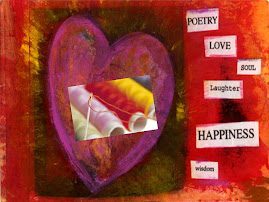
After ten years of marriage, my honey and I finally went on one of those moon things. This got me wondering about the origin of this sweet custom—honeymoons.
Imagine my surprise when I discovered the roots of the honeymoon are far from romantic and date to the era of Attila the Hun! (Hunnymoon?) First, it involved abduction of the bride-to-be from a neighboring village. The groom had to go into hiding with her from her family. Naturally, her relatives would be frantically searching for their missing daughter and sister. The groom’s best man was the only person who knew their whereabouts. Honeymoon is from an ancient Norse word that means hiding. Though the folklore is from the fifth century, this doesn’t sound far from a cave man dragging his woman around by her hair.
Second, the honey in the word comes from honeyed mead. The moon portion simply refers to the monthly lunar cycle. The Scandinavian custom in the first months of marriage was to drink the honeyed wine nightly. Even for those couples who actually wanted to hook up, village life was too work-heavy for newlyweds to loll around for long drinking mead or drinking in each other’s eyes. The idea grew from this that no month of marriage would be as sweet as the first with the ritual honeyed mead, especially after you have to get on with “real life.”
Attila took the abduction and mead aspects of honeymooning to new heights—well, more like lows. He was King of the Huns from 433-453 A.D. King Hunny himself not only absconded with another man’s wife, he eventually drank himself to death on mead.
In the Western world, the custom of newlyweds going on a holiday together after marriage is compliments of the British in the 19th century. Nowadays, honeymoons tend to be taken in seclusion to exotic places, or at least somewhere the couple considers special or romantic.
We just came back from Hawaii. We went on a whale-watching cruise and saw the Pearl Harbor Memorial on Oahu. Then we moved onto the Big Island of Hawaii for a week. The main event for us there was swimming with the dolphins followed by a helicopter ride over a live volcano. More details on this trip of a lifetime in another post.
Time, money, circumstances—they just never came together for us to do this until now. But we have something else that made it feel more urgent. Tim, my husband, has a medical condition that affects his mobility. While he’s still walking, he’s not getting around as well as he used to, and he has less endurance. We don’t know what the future will bring. We feel fortunate that Tim has gotten to be a sexagenarian with so much quality of life. Yet we don’t know about tomorrow. So, we swam with the dolphins while we could—something on his “Bucket List”— hang the expense.
Isn’t that how boomers should live their lives, anyway? Even if you don’t have something like a health issue nudging you:
I remember one of the sweetest moments in the movie “Michael,” where a rag-tag angel visiting earth, played by John Travolta, is melancholy as his time to leave draws near. He looks around then stares at the sunset and says, “I’m really going to miss this place.” This recollection, written before the trip, became more ironic during it when John lost his young son to a seizure while we were in Hawaii. How truly unpredictable life can be …We never know how much sand is in our hourglass.
We do know that by this time of our lives,
there’s more on the bottom than on the top.
So, grab your honey and get every last drop of nectar out of this time around. Where we go next may be even more spectacular. But if an angel—even a fictional one who has been both places— is reluctant to leave Earth, surely we should live every second of life here to the hilt.
Photo © Yakov Stavchansky Dreamstime.com
Notes: Sources for this post were The Honeymoon by Charles Panati and Wikipedia.


















